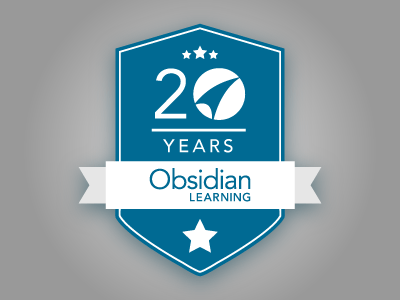Being in the business of developing custom learning programs, we at Obsidian Learning work with a lot of clients and face a huge variety of problems. We have learned to tailor our approaches to respond to different audiences and overcome many obstacles. And we have definitely learned what not to do.
Today, I want to look at some of the things to avoid when your goal is to develop an effective elearning course. Some of you may have seen our little eclip: Destructional Design.
Some of you may have experienced the reasons why good elearning is not easy to come by, some of you may have other pet peeves and some of you may have written books on “what not to do when developing an elearning course.” We would love to hear your experiences. Here is our advice:
- Do not skip the kick-off meeting. Project kick-off, stakeholder meeting, first project meeting – no matter the name, that first meeting with your client, once all the sales process is out of the way, is critical to the success of the project. Yes, everything could be faster if you didn’t have an actual meeting, but the outcome may not be as desired. This meeting allows the team to meet and greet, personalities will show their faces, “t”s get crossed and “i”s get dotted. It may cost you a few hours of your time, but not having it may cost you a client relationship.
- Do not skip the stakeholder analysis. The project may look simple. The client may tell you they need an awareness course, give you the content, tell you who the target audience is. But what about the audience’s level of experience, or their environment? How do they get their information? Is mobile learning appropriate? All of these questions need to be answered before starting the project. Sometimes, clients think they have all the answers, but until you talk to your audience, none of it is set in stone. Stakeholder analysis may be typical to communication projects. We believe that effective learning is communication. Knowledge communication.
- Do not forget the final goal. Learning objectives are critical. But following them through the entire project is even more important. Too many times we spend a lot of time designing brilliant learning objectives based on the content provided, but we forget to ask the most important question of all: What do you want the learners to do differently after taking this class? The answer can change not just the learning objectives, but the entire approach of the course. Once you have the right behavioral objectives and you begin development, make it a habit to stop and look back at the objectives. Ask yourself: Am I truly fulfilling these objectives? If I were seeing this course for the first time, would I be able to reach this training’s goal?
- Do not disregard existing preconceptions and ideas. Chances are yours is not the first learning project the client or the audience has experienced. They have previous experiences, successes, and failures. Ask them what they would like to see. Ask them what worked and didn’t work in the past. Reinventing the failure wheel is not really how you want to spend your time.
- Do not think that elearning has to migrate learners to the cloud. If you create an elearning course, know that it should be just one part of a comprehensive blended learning approach. This is probably not the only training the audience gets. The course should be designed to complement and improve the delivery, assessment, and business of education. The best elearning courses provide an integrated experience – connect the dots between the other training, instructors and learners







